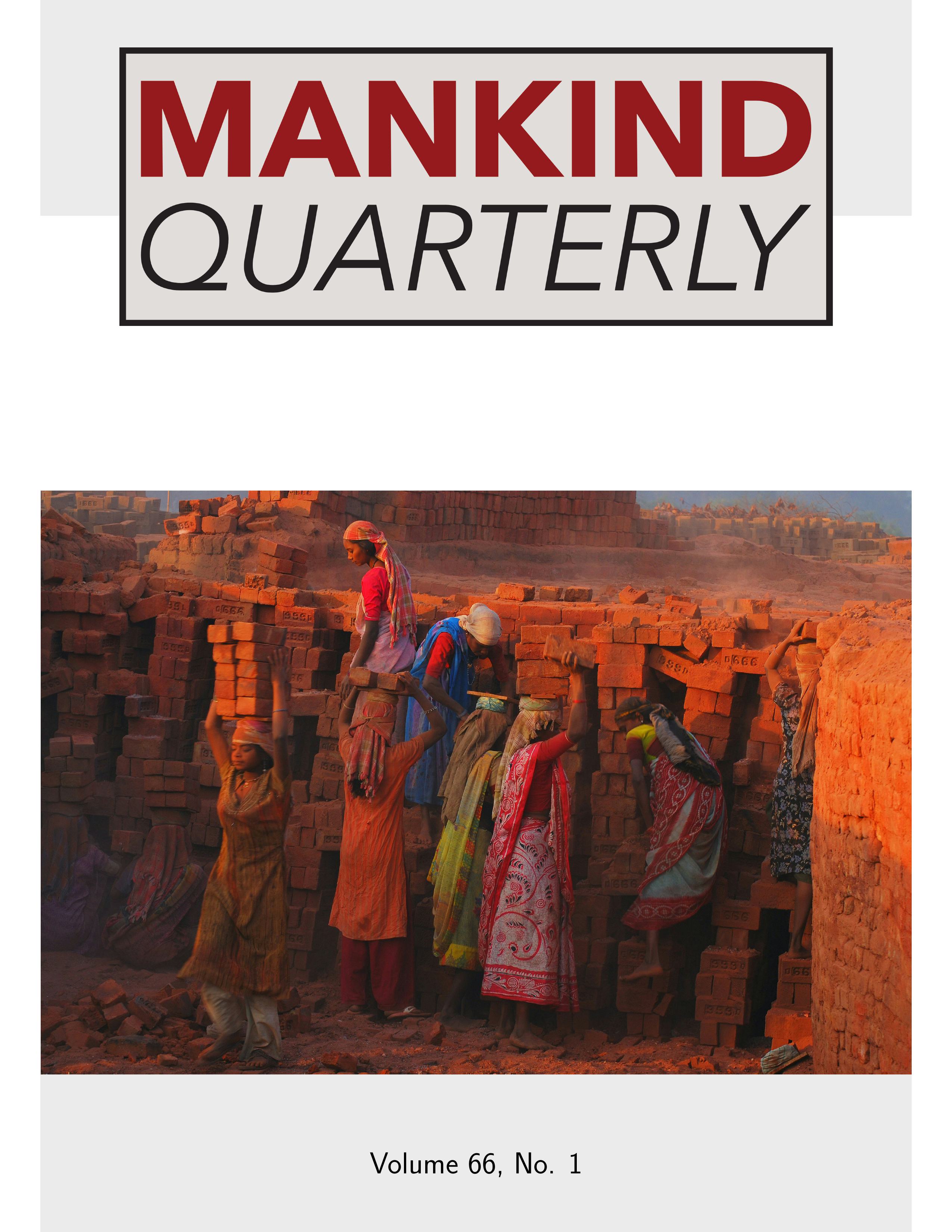Home > Archive > Volume 51, No. 1 > This paper
IQ and Skin Color: The Old World Reexamined and the New World
Donald I. Templer
Published: 2010/09/01
Abstract
The primary purpose of the present research is to compare two measures of skin color. The Templer & Arikawa (2006) research reported a country-level correlation of -.92 between (darker) skin color and IQ, using a measure of skin color derived from a skin color map in the physical anthropology textbook of Biasutti (1967). Meisenberg (2004) reported a country-level correlation of .89 between IQ and skin reflectance (proportion of incoming light that is reflected from the skin, greater with lighter skin), based on skin reflectance data compiled by Jablonski & Chaplin (2000). The present study found a correlation of -.96 between the two measures of skin color, indicating very good reliability of the skin color measures. The validity of these two independent measures of skin color is supported by correlations of .88 and .84 with latitude. Both skin color measures correlated .91 with IQ. The second objective of the research was the extension of the Templer & Arikawa (2006) Old World findings to 18 regions of the New World. Darker skin color correlated -.60 with measured IQ and -.97 with IQ as predicted from Old World countries with identical skin color. These results show that the country-level correlation between
Download PDF
